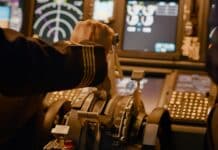The air transportation market between Europe and North America is extremely competitive. The American majors, the European majors and the Canadian airlines, as well as new players, are competing to maximize their market share.
Among these new players, a number of low-cost airlines are competing for the trust of price-sensitive customers. Norse Atlantic Airways is the latest of these airlines.
What is Norse’s strategy? Who are its competitors? But above all, what is the experience for its passengers? This is what we will discover in this series of articles following theinaugural flight between Paris Charles-de-Gaulle and New York JFK.

This series of articles is a collaboration between TravelGuys and Norse Atlantic. Therefore, the route between New York JFK and Paris Charles-de-Gaulle was courtesy of Norse.
The rest of the air itinerary and the hotel stays were financed directly by us. While we, at TravelGuys, try to maintain a certain level of objectivity, our comments about the airline may be subject to an obvious cognitive bias.
A long-haul low-cost airline
While many companies tried before the COVID-19 crisis, and sometimes with difficulty, to tackle the long-haul low-cost marketNorse is entering a post-COVID segment that was recently left open following the shutdown of WOW Air and Norvegian North America served from several European bases.

Historically, the major airlines are well established in this market: they offer a variety of cabins, ranging from the very luxurious First Class to a basic but comfortable economy cabin, with most services included (meals, blankets, entertainment, basic amenity kits).

At the same time, more leisure-oriented airlines (in France, Corsair, Air Caraibes – In Canada, Air Transat) have a more basic product essentially positioned on leisure destinations.
But the success of low-cost airlines in Europe over the last 25 years in the medium-haul segment (Ryanair, EasyJet, Vueling or Transavia for example) has given ideas to some investors, who wanted to extend this model to long-haul, and to markets in direct competition with the majors.
With legitimate questions:
- Is the cost/revenue balance sustainable on long-haul routes, especially given the variability of fuel costs?
- Is there enough of a customer base to break even and make a profit?
- Is having a basic product enough to capture enough market share to ensure fills?
This is the equation that Norse tries to address.
A growing ambition
The airline, announced during 2021, started its operations in spring 2022 between Oslo and New York JFK. Soon, Norse continued its expansion with the opening of Fort Lauderdale, Orlando and Los Angeles.
This opening strategy reflects the lessons learned from previous failures: we are expanding from our domestic base first, and by mixing Premium destinations (New York and Los Angeles) with Leisure/VFR destinations (Fort Lauderdale and Orlando).

Building on its success, the airline continues to expand in Europe, with the opening of Paris Charles-de-Gaulle and the future opening of Rome Fiumicino and London Gatwick.
With a major advantage: Europeans, hit hard by a tough inflation, are looking for savings without cutting back on vacation periods – the price of airfare is therefore an interesting adjustment variable.
A uniform fleet and dense cabins
The airline has made a simple choice: a single type of aircraft for the entire fleet, and a single configuration: the Dreamliner 787-9. At the time of writing, the airline has 11:

For the time being, these aircraft are exclusively former aircraft from Norwegian Air subsidiaries that have ceased long-haul operations.
They all have the same configuration with 56 seats in Premium Class and 282 seats in Economy Class.

This density is quite high, but is setting with similar configurations in economy class on the majors.
Bottom line
Norse Atlantic Airways is trying to offer more and more destinations to its customers, and so it proposed me to test the product on a US-Europe round trip.















